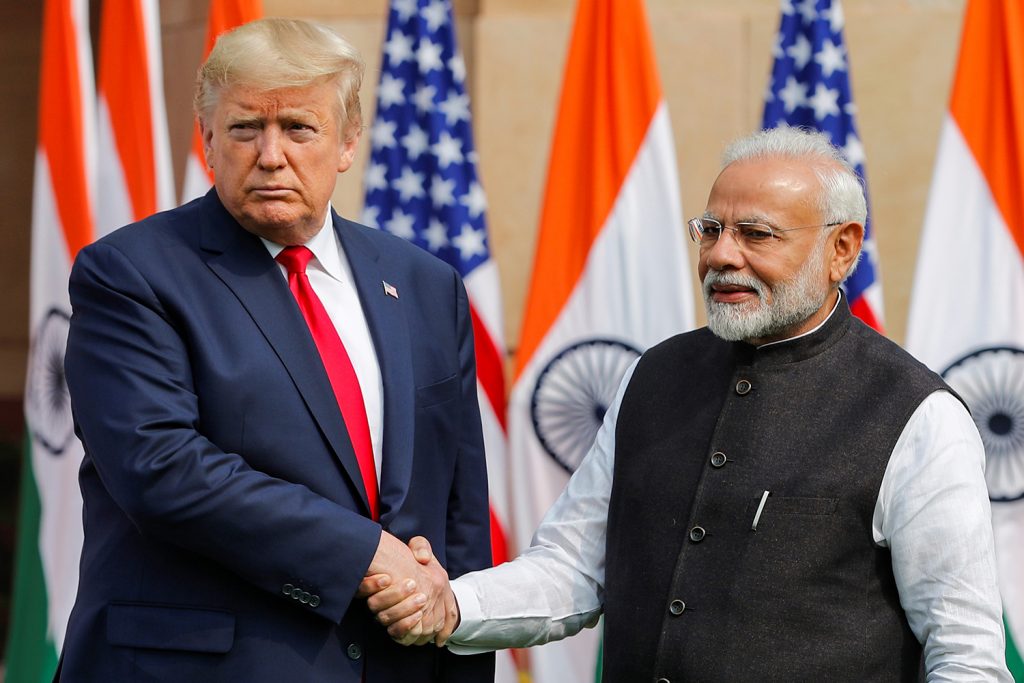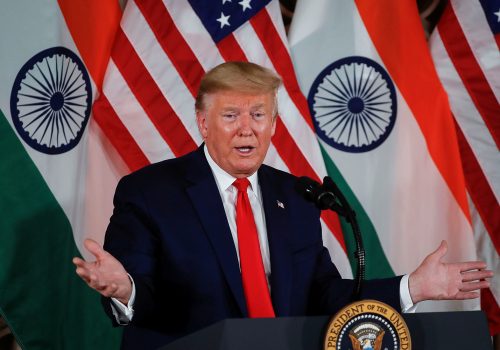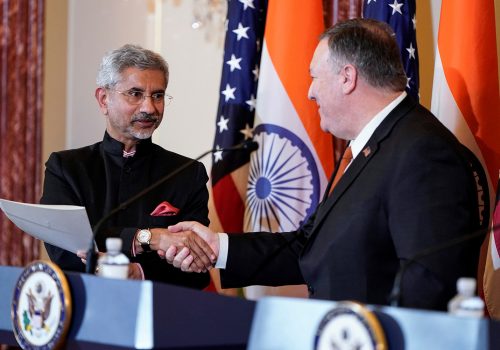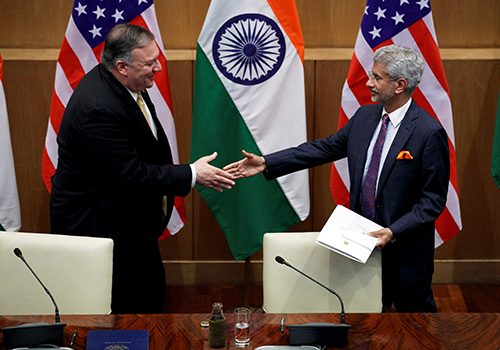President Donald J. Trump’s visit to India on February 24—the eighth of any US president—was widely lauded by domestic media in India and produced a series of small deals in arms, energy, and nuclear cooperation. The trip failed, however, to produce large or transformative agreements to advance the US-India strategic partnership, while laying bare troubling contradictions in the bilateral relationship. Here are three key takeaways.
Stalemate on trade
The signing of a widely expected “mini trade deal” was conspicuously absent during the president’s visit. Negotiators from both countries have worked for months to resolve a variety of market access and intellectual property disputes that have impeded otherwise steady growth in the bilateral trade relationship. As recently as three weeks ago, US Trade Representative Robert Lighthizer was expected to travel to India to finalize an interim agreement to be signed during the president’s trip, but Lighthizer’s travel was suddenly cancelled.
It now appears a trade agreement—mini or not—is no longer in the works. In its place, Trump announced in New Delhi that the United States and India are working toward a “bigger and better deal,” sparking speculation of a push toward an eventual free trade agreement. The failure to reach consensus on even a narrow set of market issues, however, should cast serious doubt about the possibility of a broader set of successful negotiations in the near future. The uncertain future of the stalled negotiations creates considerable uncertainty for US companies operating in the Indian market.
Progress in strategic ties
Several smaller agreements were announced during the visit. India has committed to procure $3 billion worth of defense equipment, including twenty-four MH-60R Seahawk helicopters, capable of bolstering India’s naval operations in the Indian Ocean region. Commentators have pointed to New Delhi’s purchase as a sign of deepening strategic relations between India and the United States. However, the agreement is itself recycled from an earlier procurement tendered in 2009 and later cancelled in 2017. Unlike other military technologies under discussion such as Sea Guardian surveillance drones and F-35 fighter jets, the purchase does little to expand the scope of bilateral technology sharing and military cooperation beyond that which has already been approved in past agreements.
Mixed progress was made in energy cooperation. On a positive note, Exxon Mobile and Indian Oil reached an agreement to supply liquefied natural gas (LNG) to areas not connected by physical infrastructure. In recent years India has substantially increased import capacity for LNG in an effort to retool its energy mix away from predominantly coal-powered technologies.
Yet observers were disappointed by the lack of substantive engagement on continued technologies for nuclear energy production. Westinghouse and the Nuclear Power Corporation of India were widely expected to sign an memorandum of understanding to supply India with six nuclear reactors for additional power generation. The agreement appears to have fallen through, although the two countries pledged to continue finalize the agreement “at the earliest date” in their joint statement.
Despite the publicity surrounding the president’s visit, the agreements described above were largely minor or expected, and miss the mark in driving the two countries toward greater cooperation in the strategic, commercial and economic spheres. Behind the lavish celebrations and large crowds that greeted the President in India, the two countries appeared largely unable to finalize many of the agreements expected to be signed.
Shared interests, diverging values
Concurrent events overshadowed the Trump’s visit and perhaps better elucidate the rising challenges of US diplomacy with India. Even as Trump praised Prime Minister Narendra Modi for his commitment to religious freedom in Central Delhi, sectarian riots erupted between Hindu and Muslim mobs in the city’s northeast neighborhoods. Conflict broke out after a local politician from Prime Minister Modi’s party called for mobs to disperse a crowd of protestors objecting to the Citizenship Amendment Act. The ensuing violence, which some observers have likened to a pogrom, has already resulted in the deaths of thirty-eight individuals and injured nearly two hundred others.
Split screen news coverage of riots in India’s capital and the president’s visit provided a striking visual of the internal contradictions currently roiling India, and of the challenges in engaging India as a strategic partner during this divisive period. Indefinite jailing of prominent and mainstream political leaders under draconian and authoritarian colonial-era laws, the controversial implementation of the CAA, and images of violent suppression of protests raise growing concerns of India’s continued commitment to open, pluralistic, and secular governance.
Trump’s trip to India may have failed to produce transformative agreements to move the bilateral relationship forward, but it laid bare the tensions between often-cited “shared values,” economic interests, and strategic imperatives in South Asia. Proponents of a robust relationship with India hoped the presidential visit would continue elevating the relationship to proverbial “new heights.” Instead the world witnessed the consequences of growing sectarian tensions that have racked the world’s largest democracy. The events of last week should further prompt policymakers to ask: is the United States’ partnership with India still based on shared values, or is its basis simply transactional strategic interests? The eventual answer to this question will have profound consequences for the future of US foreign policy in Asia.
Trevor Cloen is an assistant director in the Atlantic Council’s South Asia Center.
Further reading:
Image: US President Donald Trump shake hands with India's Prime Minister Narendra Modi ahead of their meeting at Hyderabad House in New Delhi, India, February 25, 2020. REUTERS/Adnan Abidi



